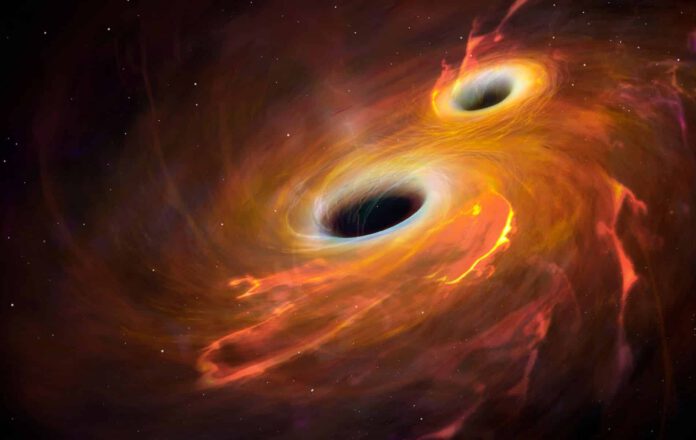
Ever since humans discovered the existence of black holes, there has been an ongoing curiosity: what would happen if one were to jump into it? Although we currently do not have a concrete answer, NASA has created a stunning simulation to provide an idea.
The Mystery of Black Holes
A black hole is formed when a massive star dies and collapses upon its own gravity. It is an astronomical area from which nothing, not even light, can escape because of extreme distortion of space-time caused by the immense gravity of condensed mass. Surrounding the black hole is an imaginary boundary called the ‘event horizon’. Just beyond this boundary, light can still escape. When black holes merge, a supermassive black hole can form, which is believed to be at the center of most galaxies. Black holes were first described by Albert Einstein in his general theory of relativity in 1915, but the first actual black hole was only discovered in 1971.
The Paradox
Because light is our main tool for exploring the universe and it’s ineffective to discern a black hole, we know very little about what actually happens there. Even in theory, scientists face a paradox where information remains stored on the event horizon from the observer’s perspective but permanently trapped when viewed from the object crossing the boundary.
What we do know, based on how light and matter move around black holes, is that the gravity at the event horizon is incredibly strange. In some cases, anything too close is torn apart down to its atomic level.
The Bravery of an Astronaut
Despite the mystery surrounding it, black holes captivate the imagination. NASA’s Goddard Space Flight Centre scientist Jeremy Schnittman explains, “People often ask about it, and simulating something nearly unimaginable helps connect the math of relativity theory with actual consequences in the real universe.” So, he simulated two scenarios: one where a camera —standing in for a brave astronaut— just misses the event horizon and recoils, and another where it crosses the boundary and seals its fate.
“If you have to choose, you want to fall into a supermassive black hole,” continues Schnittman. “Black holes with a stellar mass of up to about thirty solar masses have a much smaller event horizon and stronger tidal forces, which can tear approaching objects apart before they reach the horizon.”
The Simulated Supermassive Black Hole
To simulate these scenarios, the astrophysicist attempted to recreate a supermassive black hole, aided by recent breakthroughs in the field. Our knowledge about supermassive black holes such as M87* at the center of the named galaxy and Sagittarius A* in our own galaxy has greatly improved. Although the black hole itself remains invisible, the light emitted by the glowing clouds of matter around each hole has provided unprecedented insight into the phenomenon.
The new simulation is based on a black hole similar to Sagittarius A*. Schnittman started with a black hole with a mass equivalent to about 4.3 million suns and inputted the data into NASA’s supercomputer. After five days of processing, the program had generated 10 terabytes of data that scientists used to create videos that shed light on the feeling of falling into a supermassive black hole.
The Experience of Spaghettification
The camera starts its journey around 640 million kilometers away from the black hole and moves inward. As it approaches, the disk of material around the black hole and a structure consisting of a ring of photons become clearer. These elements -and space-time itself- become more distorted as it gets closer to the black hole. In the simulation, the camera makes nearly two full rotations around the black hole before crossing the event horizon. Within a mere 12.8 seconds, it undergoes ‘spaghettification’. Meanwhile, there’s another version where the camera gets close to the black hole and manages to escape its gravity before launching out into space.
Hopefully, one day we could witness actual footage of black holes. Until then, rest reassured that we can have a glimpse without needing to leave the comfort of our seats.











